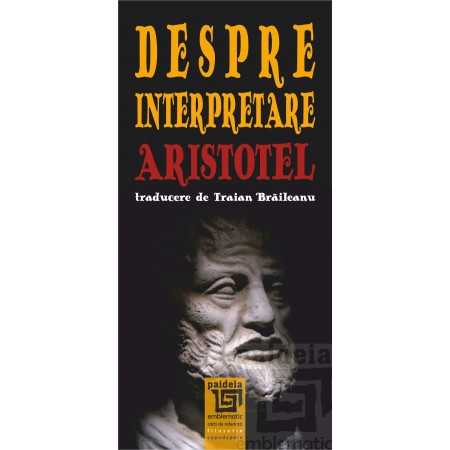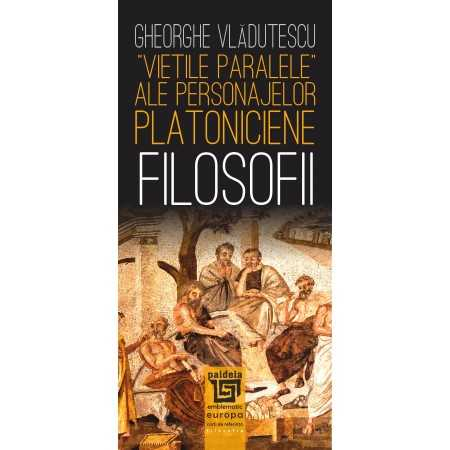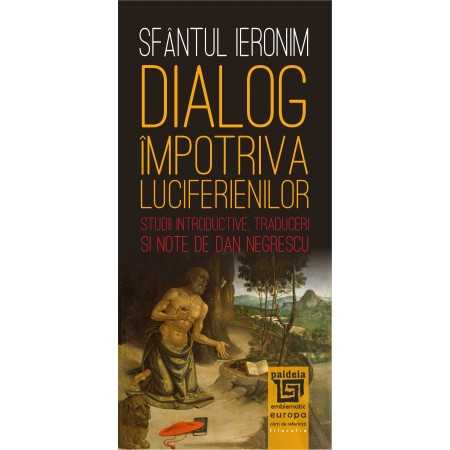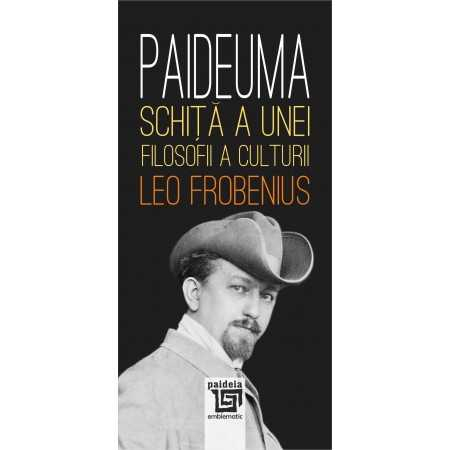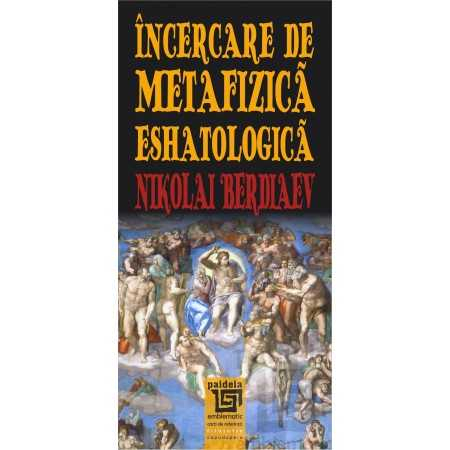Publisher: Editura Universitara
Author: Adrian Ignat
ISBN: 978-606-591-348-6
DOI: 10.5682/9786065913486
Publisher year: 2012
Edition: I
Pages: 452
- Description
- Download (1)
- Content
- Authors
- Reviews (0)
Lect Fr. Dr. Adrian Ignat book is not merely historical presentation of the three most important cities in the entire history of the world, but also the presentation of three theological landmarks in the history of the two thousandth anniversary of Christianity, with strong implications for social and political learning in East and West. Rome, Constantinople and Moscow are three cities that wanted to materialize the idea of the city of God on earth. Despite this desire often driven by the various personalities of human pride in their history, they have never come to be fully realized, becoming only a pale and sad picture, purely human, the heavenly Jerusalem. Claiming primacy of spiritual and temporal, the eternal city of Rome the ancient Roman Empire, the residence Pontiff died where two of the Apostles of Jesus Christ, Holy Apostles Peter and Paul to act as a leader of all Christianity and God's eternal city. Founded by Constantine the Great (330), at the crossroads of two continents Europe and Asia - Constantinople, "the new Rome", accounted for about a thousand years after the fall of Rome (476) as barbarians, not only capital of the Roman Empire, became the synthesis of Byzantine Greek and Latin culture and spirituality, but also the town of Mary and "God-guarded city ', capital of eastern Christendom theological whole.Moscow the Third Rome, published by the time Constantinople fell (1453), there was more in Russian popular consciousness in the writings of great theologians Russia without ever reaching mature and thus to manifest as. Despite all the differences and similarities between the three cities, they are only "three major influences on historical stops the historical evolution of the whole Christian Church."
† Prof. Dr. Niphon MICHAEL
Archbishop and Metropolitan
-
Cele trei Rome - Evolutia istorico-politica si cultural-bisericeasca a unui concept
Download
PREFAŢĂ / 5
PREFAŢĂ / 11
ARGUMENT / 15
INTRODUCERE / 19
PARTEA I
ROMA – CONCEPT ŞI ÎNSEMNĂTATE / 35
I. 1. CONCEPTUL DE „ROMĂ” ÎN ISTORIA IMPERIULUI ROMAN / 37
I.1.1. Evoluţia istorică a Imperiului roman / 37
I.1.2. Roma ‑ capitala Imperiului roman / 46
I.1.3. Propovăduirea religiei creştine la Roma / 48
I.1.4. Arderea Romei – împăratul Nero / 52
I.1.5. Persecuţiile împotriva creştinilor / 54
I.1.6. De la Roma păgână la Roma creştină / 57
I.1.7. Edictul de la Milan (313) / 65
I.1.8. Biserica Romei şi combaterea ereziilor / 67
I.2. DECLINUL ŞI PRĂBUŞIREA ORAŞULUI ROMA / 68
I.3. ROMA ÎN TIMPUL PAPEI GRIGORIE CEL MARE / 76
I.3.1. Condiţiile apariţiei episcopatului lui Grigorie cel Mare / 76
I.3.2. Importanţa Papei Grigorie cel Mare în Apus / 86
I.4. STATUL PAPAL ŞI IMPERIUL CAROLINGIAN / 94
I.4.1. Întemeierea Statului Papal / 94
I.4.2. Încoronarea Regelui Carol cel Mare / 101
I.5. GRIGORIE AL VII‑LEA HILDEBRAND ŞI PRIMATUL PAPAL / 106
I.5.1. Încoronarea regelui Otto I în relaţiile Roma‑Constantinopol / 106
I.5.2. Puterea papală în viziunea papei Grigorie al VII‑lea / 111
I.6. CULMEA PUTERII PAPALE – PAPA INOCENŢIU AL III‑LEA/ 118
I.7. APARIŢIA REFORMEI ŞI DECĂDEREA PUTERII PAPALE / 123
CONCLUZII / 126
PARTEA A II‑A
CONSTANTINOPOLUL – CEA DE‑A DOUA ROMĂ / 131
II.1. CONSTANTIN CEL MARE ŞI RELIGIA CREŞTINĂ / 132
II.1.1. Constantin cel Mare şi „Noua Romă” / 146
II.1.2. Crearea Imperiului creştin / 158
II.2. ÎMPĂRŢIREA IMPERIULUI ROMAN ÎNTRE ORIENT ŞI OCCIDENT / 168
II.3. LOCUL EPISCOPULUI DE CONSTANTINOPOL ÎN IERARHIA BISERICII CREŞTINE / 173
II.3.1. Ierarhia primelor scaune episcopale ale lumii creştine / 177
II.3.1.1. Scaunul Romei / 177
II.3.2. Scaunul Alexandriei / 181
II.3.3. Scaunul Antiohiei / 183
II.3.4. Scaunul Ierusalimului / 185
II.3.5. Scaunul Constantinopolului / 187
II.3.6. Ierarhia scaunelor episcopale la Sinodul I ecumenic / 191
II.4. CAPITALA IMPERIALĂ ÎN CANOANELE SINOADELOR ECUMENICE / 193
II.4.1. Rivalitatea dintre Roma şi Constantinopolul / 196
II.4.2. Roma şi Constantinopol în canoanele Bisericii Ortodoxe / 200
II.4.2.1. Canonul 3 al Sinodului II Ecumenic / 201
II.4.2.2. Canonul 28 al Sinodului al IV‑lea ecumenic / 204
II.4.2.3. Atitudinea apusenilor faţă de canonul 28 al Sinodului al IV‑lea ecumenic / 207
II.5. CONLUCRARE ŞI RIVALITATE ÎNTRE ROMA VECHE ŞI „ROMA NOUĂ” / 214
II.5.1. Roma şi Constantinopolul în timpul împăratului Justinian / 216
II.5.2. Relaţiile bisericeşti în timpul ereziei iconoclaste / 222
II.5.3. Marea schismă de la 1054 între Roma şi Constantinopol / 227
II.5.4. Cruciada a IV‑a şi cucerirea Constantinopolului de către latini / 237
II.6. CĂDEREA CELEI DE‑A DOUA ROME (29 MAI 1453) / 246
CONCLUZII / 251
PARTEA III
MOSCOVA – CEA DE‑A TREIA ROMĂ / 255
III.1. ÎNCREŞTINAREA RUŞILOR / 257
III.2. RELAŢIILE RUSIEI CU IMPERIUL BIZANTIN DUPĂ MAREA INVAZIE MONGOLĂ / 284
III.3. PATRIARHUL NIKON ŞI IDEEA SA DE CONDUCERE TEOCRATICĂ / 307
III.4. ŢARUL PETRU CEL MARE ŞI SUBORDONAREA BISERICII ORTODOXE RUSE / 311
III.6. BISERICA RUSĂ ÎN TIMPUL PERIOADEI COMUNISTE (1917‑1989) / 328
III.7. RUSIA ŞI IDEEA MESIANICĂ DUPĂ 1989 / 343
III.8. TENDINŢE ALE BISERICII ORTODOXE DIN RUSIA ÎN SEC. AL XX‑LEA / 350
III.9. TEOLOGIA RUSĂ ŞI CONCEPŢIA DESPRE A TREIA ROMĂ / 355
III.9.1. Slavofilii şi ideea mesianică rusă / 358
III.9.1.1. Occidentaliştii modernişti / 359
III.9.1.2. Slavofilii tradiţionalişti / 363
III.9.1.3. De la slavofilism la pan‑slavism / 367
III.9.1.4. Narodnicismul / 371
III.9. JURIDISMUL LATIN, SIMFONIA BIZANTINĂ ŞI SUPUNEREA ŢARISTĂ / 376
CONCLUZII / 379
ÎNCHEIERE / 383
ANEXA 1 / 389
ANEXA 2 / 391
ANEXA 3 / 392
ANEXA 4 / 401
ANEXA 5 / 3
ANEXA 6 / 405
BIBLIOGRAFIE / 410
Graduate of the Master of Arts in Theological Studies at Austin Presbyterian Theological Seminary (USA);
Doctor of the Faculty of Humanities, Department History, University Valahia of Targoviste;
Doctor of the Faculty of Orthodox Theology at the University "Lucian Blaga" Sibiu (Magna cum laude);
He has published articles and studies, participated in various symposiums and conferences;
Lecturer at the Faculty of Theology Targoviste holder to discipline Universal Church History and History of the Romanian Orthodox Church.
Customer Support Monday - Friday, between 8.00 - 16.00
0745 200 718 0745 200 357 comenzi@editurauniversitara.ro
6359.png)
![The three Rome - Historical-political and cultural-religious evolution of a concept [1] The three Rome - Historical-political and cultural-religious evolution of a concept [1]](https://gomagcdn.ro/domains/editurauniversitara.ro/files/product/large/cele-trei-rome-evolutia-istorico-politica-si-cultural-bisericeasca-a-unui-concept-1776-694592.jpg)
